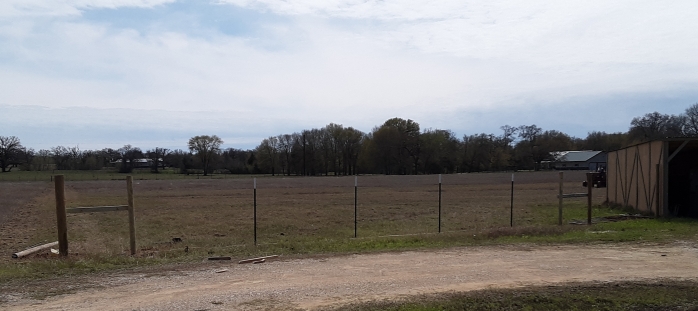WhirldWorks Farm
A small homestead and Debouillet sheep farm in Central Texas
Pasture Management Project

It is hard to believe that this coming Easter will mark three full years living on our farm! One of the very first tasks we set our hands to here was fencing in some of the open hay field/pasture in order to welcome our brand new flock of Debouillet Sheep.
Three years in and it appears a new annual tradition has set in and that tradition involves adding fencing.
We are very thankful that each year our flock grows and with that growth comes the need to continue adding more and more pasture. Pasture health is incredibly important to a healthy flock of sheep and with each passing year we find it necessary to add additional plots for rotational grazing.

In the Spring of 2018 we fenced in almost two acres of the existing hay field and I thought for sure that would be enough for a while. I was quite mistaken as the existing three fenced sections are proving to be slightly under sized for our now 13 sheep. There’s just not enough time to give one field suitable rest between the two groups we have them separated in right now. As a result, it will be much better for our sheep to continue expanding their plots so that a rotation plan can give each plot the rest it truly needs to support the number of animals we need them to support.
So, the Spring fencing continues. We are in the process of sectioning off an additional 3.2 acres into two added pastures. Doing so will reduce our existing hay field to a little over 2 acres which is somewhat difficult to come to terms with, but our little white fluffs really don’t go through much hay over the winter when we manage the pastures correctly. This new arrangement though is going to add a little more complexity to our operation than previous annexations.

The first being shade as our original three pasture sections all have trees in them that the sheep can find some refuge in from the summer sun. These two new pastures have nothing at all to give in the way of shade. Were going to have to build some sort of shelters for them in the very near future so that they can escape from the hot summer sun.
The second issue is that for the past several years, the farmer that has been harvesting our hay always took care of fertilizing our fields. With only slightly more than two acres of hay field left, it simply isn’t worth his time or money to manage. In doing some research to have it done ourselves, we are such a small operation that the big agricultural fertilizing operations would consider our little plot their lowest priority so they’d get to us way too late in the Spring and the cost for the amount of hay we would produce is rather upside down. We’ve chosen to solve this problem by doing it ourselves.
To accomplish this, we recently purchased a 30 gallon tow-behind sprayer. I already did a test run and we can manage to fertilize one of our fields with the 30 gallon tank so I believe the sprayer will pay for itself in just a few applications. There will be a bit of a learning curve on this activity, but we’ll post more about our experiences with that soon.
I’m sure that Spring time brings all sorts of new projects to your farm and homestead and we look forward to reading about your adventures as well!


Pingback: Handmade Wooden Sheep On Sale Now – WhirldWorks Farm
Pingback: Grazing sheep and cattle together – WhirldWorks Farm